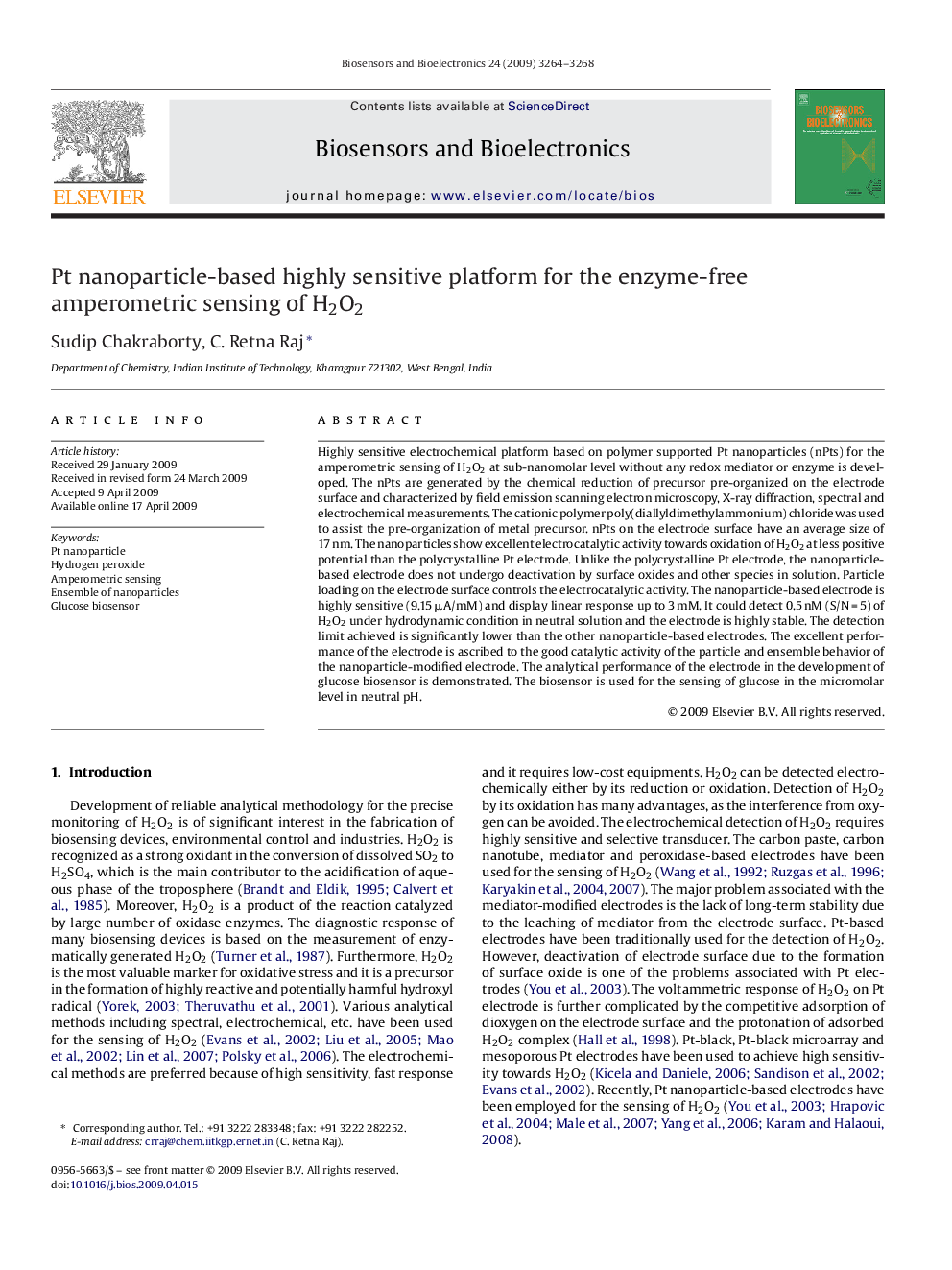| Article ID | Journal | Published Year | Pages | File Type |
|---|---|---|---|---|
| 868645 | Biosensors and Bioelectronics | 2009 | 5 Pages |
Highly sensitive electrochemical platform based on polymer supported Pt nanoparticles (nPts) for the amperometric sensing of H2O2 at sub-nanomolar level without any redox mediator or enzyme is developed. The nPts are generated by the chemical reduction of precursor pre-organized on the electrode surface and characterized by field emission scanning electron microscopy, X-ray diffraction, spectral and electrochemical measurements. The cationic polymer poly(diallyldimethylammonium) chloride was used to assist the pre-organization of metal precursor. nPts on the electrode surface have an average size of 17 nm. The nanoparticles show excellent electrocatalytic activity towards oxidation of H2O2 at less positive potential than the polycrystalline Pt electrode. Unlike the polycrystalline Pt electrode, the nanoparticle-based electrode does not undergo deactivation by surface oxides and other species in solution. Particle loading on the electrode surface controls the electrocatalytic activity. The nanoparticle-based electrode is highly sensitive (9.15 μA/mM) and display linear response up to 3 mM. It could detect 0.5 nM (S/N = 5) of H2O2 under hydrodynamic condition in neutral solution and the electrode is highly stable. The detection limit achieved is significantly lower than the other nanoparticle-based electrodes. The excellent performance of the electrode is ascribed to the good catalytic activity of the particle and ensemble behavior of the nanoparticle-modified electrode. The analytical performance of the electrode in the development of glucose biosensor is demonstrated. The biosensor is used for the sensing of glucose in the micromolar level in neutral pH.
